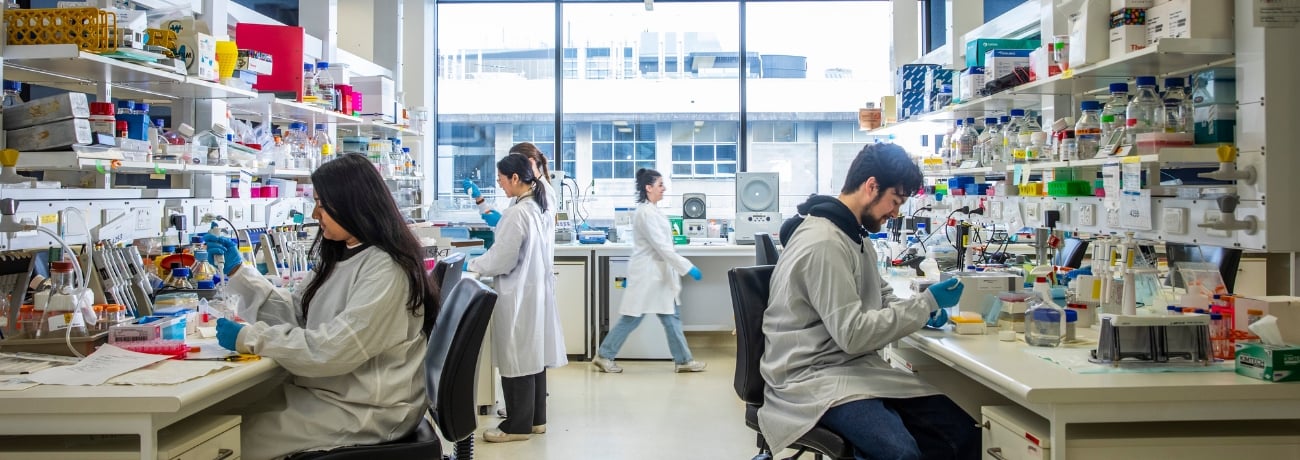Key highlights
- New findings on changes in the gut microbiome may influence the progress of Huntington’s disease and related disorders including Alzheimer’s and Parkinson’s disease.
- This is the first study to examine the gut microbiome in Huntington’s disease.
- Male Huntington’s mice had a lower weight gain despite higher food intake.
- Huntington’s mice had altered distribution of bacteria compared to their healthy siblings.
- This distribution is evident at the same time as disease symptoms become apparent.
Australian researchers have for the first time examined the gut microbiome in a mouse model of Huntington’s disease, and found dramatic differences between healthy and diseased mice.
The research points to the urgent need for follow-up studies in humans to validate the findings. The study provides even more evidence that the gut plays a significant role in diseases of the brain.
Professor Anthony Hannan, a world-renowned authority on the disease processes underlying Huntington’s, was the first to show that environmental enrichment can slow down the inexorable decline.
Now, Professor Hannan, Geraldine Kong and colleagues have probed the relative levels of gut bacteria in a mouse model of Huntington’s disease, and found dramatic differences between healthy mice and genetically engineered mice that will develop Huntington’s as they age.
Male Huntington’s disease mice had different proportions of various bacteria compared to their healthy siblings. Intriguingly, they also ate more food but gained weight at a lower rate.
At the same time, the gut becomes dysfunctional, excreting excess water in faecal matter.
The first movement symptoms of the disease also appeared at this time, although the researchers are unable to say at this stage whether the altered microbiome (the billions of bacteria that live in the gut) plays any role in the timing of symptom onset.
According to Professor Hannan:
“Gut microbiome changes have already been described in Alzheimer’s and Parkinson’s disease, autism, depression, chronic fatigue syndrome, type 2 diabetes and other diseases, with researchers excited about the possibility that understanding the link between the microbiome and disease could lead to new therapeutic approaches.”
“Before we jump that hurdle, we really need to know whether these same changes are seen in Huntington’s patients. I strongly suspect they will be, as this is a very accurate model of the disease. Furthermore, the bacteria that live in the gut of mice are similar to those in the human gut, therefore such microbiome studies have direct clinical relevance.”
The research was published in Neurobiology of Disease and was funded by the National Health and Medical research Council
About Huntington’s disease:
Huntington’s disease is a fatal degenerative disease inherited from a parent, in which brain cells begin to die leading to onset of symptoms in a person’s mid-30s to 40s, and sometimes earlier (five per cent of sufferers have juvenile onset).
Dysfunctional and dying brain cells cause gradually worsening movement symptoms, dementia and eventually death. Huntington’s patients can also suffer from psychiatric symptoms, including depression.
Over 2500 Australians are diagnosed with Huntington’s at any one time – approximately the same frequency as other neurodegenerative diseases like motor neurone disease. Huntington’s is caused by a mutated copy (a ‘genetic stutter’) of the Huntingtin gene.
Family members who inherit the gene mutation will always get the disease, and have a 50 per cent chance of passing it on to their children. Huntington’s research is chronically under-funded and therefore under-studied.
About The Florey
The Florey Institute of Neuroscience and Mental Health is one of the largest and highly respected brain research centres in the world. Our teams work on a range of serious diseases including stroke, epilepsy, Alzheimer’s, Parkinson’s and motor neurone diseases, depression, autism, schizophrenia, anxiety disorders and addiction. We are world leaders in imaging technology, stroke rehabilitation and large population studies to improve patient care around the world.
